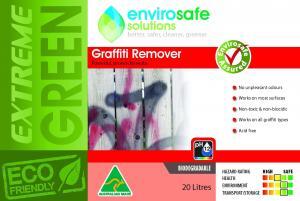 If you have ever visited Bakersfield in California, you would know the pollution situation there is dire.1 As I drove through the city on a recent visit, I noticed that the pollution level in Bakersfield was so bad that it was visible to the naked eye in the form of dense grey smog and I made a mental note to look up current pollution control norms in the USA.3 It also led me to wonder about the history of pollution control and regulations in the United States and whether they were leading the way on the issue, given the current state of the global environment. 2
If you have ever visited Bakersfield in California, you would know the pollution situation there is dire.1 As I drove through the city on a recent visit, I noticed that the pollution level in Bakersfield was so bad that it was visible to the naked eye in the form of dense grey smog and I made a mental note to look up current pollution control norms in the USA.3 It also led me to wonder about the history of pollution control and regulations in the United States and whether they were leading the way on the issue, given the current state of the global environment. 2
My research on pollution control norms in the USA found that the US government had passed the Clean Air Act back in the 70’s.4 At that time, the new pollution control norms was hailed as one of the most rigorous anti-pollution norms to be enforced in the world and resulted in cars that had cleaner emissions, factories that were less polluting due to the newly mandated and installed air scrubbers and fuels that contained less harmful pollutants. The new pollution control norms meant that Americans could breathe easier – for a while.
As the number of cars, air planes, ships, factories and other contributors to air pollution kept increasing, the ozone levels (principle contributor to smog) in the cities also kept steadily increasing.5 By the 90’s, many American cities were affected by the higher concentrations of ground level ozone and the time had come for pollution control norms that were stronger and tighter.
The Environmental Protection Agency in the USA is the principle authority that is responsible for keeping a check on pollution in America.6 I found out that it had indeed drawn up tighter and more up-to-date pollution control norms that should have taken care of the smog situation that affects as many as half the cities in the USA. Unfortunately, as in most other countries, the new and tighter pollution control norms were stuck somewhere in the files awaiting government approval. The polluting industries it seems have an iron grip at the highest levels in the White House and will not allow the President to receive sufficient support to pass the law enforcing tighter pollution control norms.
Had the new pollution control norms come into force, more investment would have been required for installing up-to-date pollution control equipment and for producing engines that burn fuel through a cleaner process and fuels that are leaner in carbon content. The main opposition stems from a flawed logic that the new pollution control norms would mean increased costs and therefore jobs would be lost. Of course the costs would go up. But it is equally true that new jobs would be created in the manufacture and installation of new anti-pollution equipment and revised monitoring norms.
Instead of waiting for America to lead the world with new pollution control norms, surely this is an opportunity for Australia (and other governments in the world) to take the initiative and accept the mantel of leadership in setting up new pollution control norms.7 Australia can indeed lead the way on this issue.
Telephone Envirosafe Solutions, a wholly Australian company for more information about eco-friendly products that really work. 1300 889070
Sources:
1. Brief on Bakersfield, C.A: http://en.wikipedia.org/wiki/Bakersfield,_California
2. pollution level in Bakersfield: http://www.bakersfield.com/news/local/x16510738/Bakersfield-again-No-1-for-particle-pollution
3. Current pollution control norms in the USA: http://www.pollutionissues.com/Ho-Li/Laws-and-Regulations-United-States.html
4. Clean Air Act, USA: http://www.epa.gov/air/caa/
5. Ozone levels and smog: http://www.epa.gov/region1/airquality/oz_prob.html
6. The Environmental Protection Agency in the USA:
7. Clean Energy Future initiative: http://www.environment.gov.au/cleanenergyfuture/index.html




















